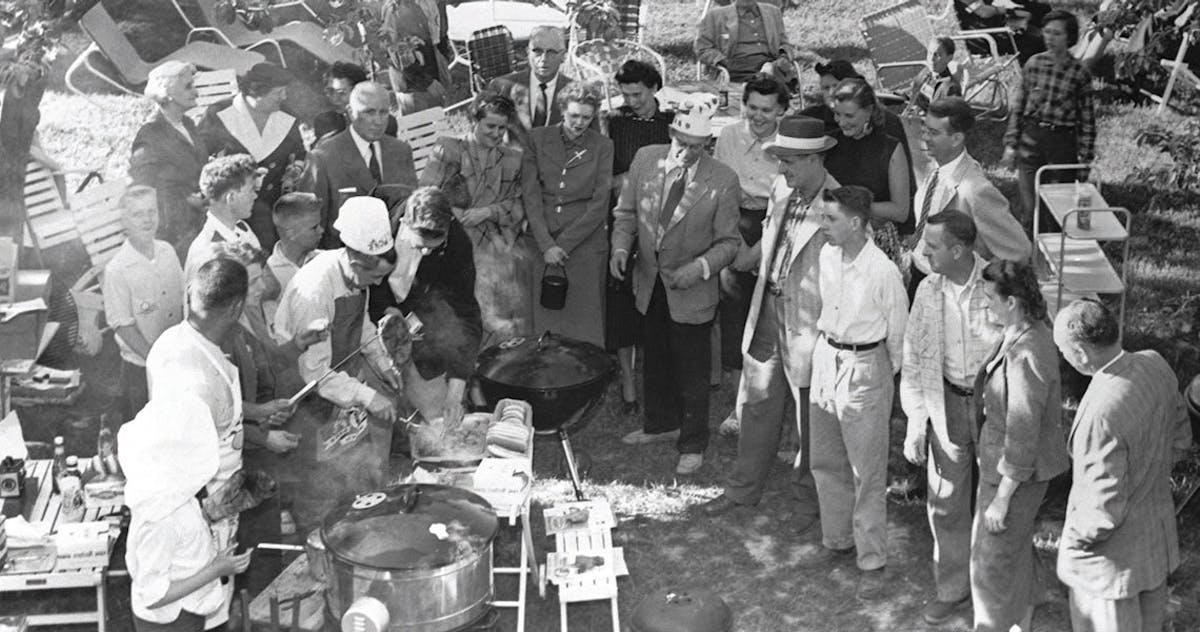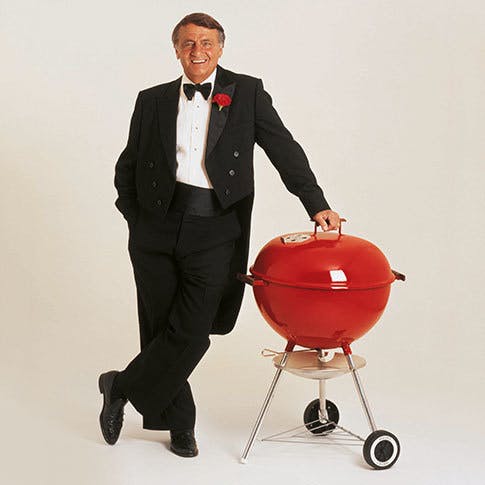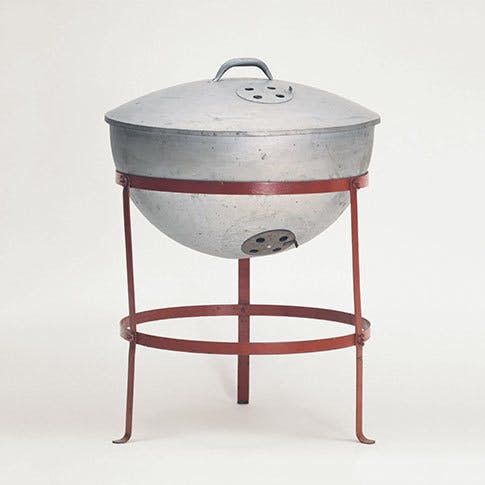The history of Weber THE START OF THE WORLDWIDE BARBECUE CULTURE


With World War II at an end, America’s heroes returned home in search of somewhere to live with a small backyard where they could relax in peace and quiet. Suburbs soon started to pop up and entertaining outdoors became de rigueur. Free standing metal braziers replaced traditional barbecue pits as home chefs turned to high heat fast grilling instead of the slow-cooking of yesteryear. But this only brought more problems. If it rained, barbecues spluttered into a soggy mess and a mere breeze would turn a mouth watering steak into an ash-encrusted disappointment. It took an unexpected light bulb moment after another barbecue bail-out for George Stephen Snr. to come up with the answer.

If George was still hungry for a good steak, he was even hungrier for success. Back at the metal works, where he worked, his idea began to take shape as he chopped a metal buoy in half, added air vents and legs and the original kettle barbecue was born. He realised it looked more than a bit weird, but he proudly took it home to try it out.
His neighbours only stopped laughing at the spaceship, as they called it, when they tasted the steak that George cooked for them on it. He knew that cooking on a rounded bowl with the lid down was the key and he was quickly proved right. Now everybody wanted one. George decided to set up on his own and by the end of the 1950s, he was able to buy out Weber Brothers Metalworks. He then changed its name to Weber-Stephen Products. George’s lidded barbecues were proving to be such a hit throughout the 1960s and 1970s that American TV picked up on his story.
George and his small team toured the country doing cookery demonstrations wherever anyone would let them and TV programmes made it easier to show just how easy Weber barbecues were to use. People loved the simplicity and delicious results possible.
By now, entertaining at home was thankfully becoming less formal and the first Weber gas and electric barbecues were welcomed with open arms. Weber created some pretty funky designs during the era and each one was built around the much-loved dome shape with rounded bowl. George Stephen Snr. had always been a man with a big idea, but with one particular business idea, even he thought he may have bitten off more than he could chew.
During the 1970s, companies were enticing customers with free gifts and other much desired items in an effort to win new business. George’s business was still quite small, but his entrepreneurial spirit pushed him to go for it with an ambitious plan. He approached his local bank with an idea to give away free grilled sandwiches to anyone who came into the bank on ‘Sandwich Day’. To his amazement, the dour bank manager loved the idea and a date was set: three weeks hence. It was only then that George wondered how he was going to deliver what he’d promised.
Sandwich Day arrived and so did fifty 8kgs hams, half a truck of freshly baked rye bread, 227kgs of charcoal and eight Weber Ranch Kettles. George fired up the barbecues, staring at the mountain of food, desperately hoping he wouldn’t still be staring at it at the end of the day.
The first sandwich was due to be served at 11am but by 9am, the police had to be called for traffic control. The bank was swamped from the word go and grilled ham sandwiches were flying around amongst the bank account application forms. By the end of the day, they’d got through 862kgs of ham, 431kgs of charcoal, a truckload of rye and a vat of mustard. George had hoped to sell 40 or 50 sandwiches to the bank for their customers, but that turned into three truckloads and the bank had opened 650 new accounts. Result!
The 1980s was a period of growth, innovation and change for Weber. George's passion for barbecuing was as high as ever and he continued to find ways to make better barbecues. He found that angled metal bars distributed heat more evenly and he added channel drippings to reduce flare-ups and make cleaning easier. And when the Weber Genesis was introduced, it changed the design of gas barbecues forever.
Sadly, George Stephen Snr. passed away in 1993, but the people of America have never forgotten that it was his simple invention that changed the way they cooked outdoors. Through his amazing vision, he took a basic metal bowl and continued to transform it and re-invent it into the Weber barbecues we use today.
In October 2013, George Stephen Snr. was posthumously inducted into the Barbecue Hall of Fame at the World Series of Barbecue Championship event held in Kansas City. Jim Stephen, who took over from George, accepted the award on behalf of the family. Jim said: “My father knew that one of the best ways to bring families together was through a shared meal enjoyed in the great outdoors. My mom Marge and the entire Stephen family are so proud of what my father accomplished, and we are thrilled that he is being inducted into the Barbecue Hall of Fame. His vision and dogged determination literally changed the landscape of outdoor entertaining, and Weber will continue to honour his legacy by developing and producing the best grills and accessories available for years to come.”
We think George Stephen Snr. would be proud beyond words that his invention led to Weber barbecues being the number 1 barbecue brand today – loved by millions the world over.
